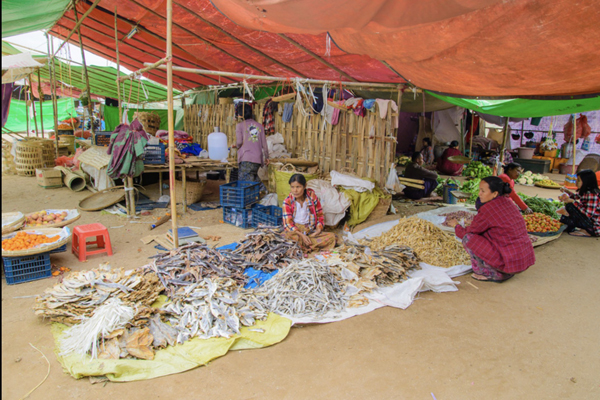Information about Pakkoku
Lying in the center of Myanmar, Pakokku used to serve as a port. This town was occupied by Communist rebels in 1949 and held until 1955, when it was liberated by government forces. Currently, Pakokku plays as a trading centre for the Chindwin and Yaw River valleys and famous for its agricultural products including peanuts, sesame and rice. In additions, it deals in timber, palm sugar and is head of downstream. It has an airfield and a diesel-electric plant. The east of Pakokku is known for dry zone, with gravelly and sandy land. The Chindwin and Irrawady rivers provide alluvia, and are utilized for irrigation.
Lying in the centre of Myanmar, Pakokku used to serve as a port. This town was occupied by Communist rebels in 1949 and held until 1955, when it was liberated by government forces. Currently, Pakokku plays as a trading centre for the Chindwin and Yaw River valleys and famous for its agricultural products including peanuts, sesame and rice. In additions, it deals in timber, palm sugar and is head of downstream. It has an airfield and a diesel-electric plant. The east of Pakokku is known for dry zone, with gravelly and sandy land. The Chindwin and Irrawady rivers provide alluvia, and are utilized for irrigation.

Besides, the town is also a noticeable Buddhist centre with more than eighty monasteries. One of the most famous pagodas in Pakokku is Thiho Shin Pagoda, built by Kung Alaungsithu. The Pagoda contains an image presented by the King of Ceylon some 800 years ago, one of the most renowned in Myanmar. Thiho Shin pagoda festival is held from 8th waxing day to 10th waxing day of Nayon annually. Besides Pakokku, we can also find another famous pagoda such as Thiho Shin Pagoda and Shwe Ku Pagoda which is famous for its wood carving and houses a Buddha image seated on a lotus throne.
Heading 20 kilometers to Pakokku’s northwest, you can find the remains of Pakhangyi, an ancient city constructed by King Mindon in 1886 with about 383 ancient monumental buildings. This monastery was built in the shape of a royal residence attached with four large halls namely the Shirine hall, the Sanu hall, the main hall and the Bawga hall. The city walls of Pakhangyi are the most massive among the remaining un-ruined city walls in Myanmar.
If you travel a little bit to the south and across the Irrawaddy River and visit the Temples of Bagan with more than 2,000 Buddhist temples or move to the east and enjoy the beauty of Inle Lake. Inle Lake ranks among Myanmar’s top five tourist attractions with a pretty beautiful setting including mountains tumbling down to the lake and all of life going on and around the lake, plus the majestic sunsets with the sun disappearing behind the mountains and a chill settling down itself on the lake.
